|
|
|
|
Discolored Sac & Prez Dollars
What Are They?
by Ken Potter
September 19, 2008
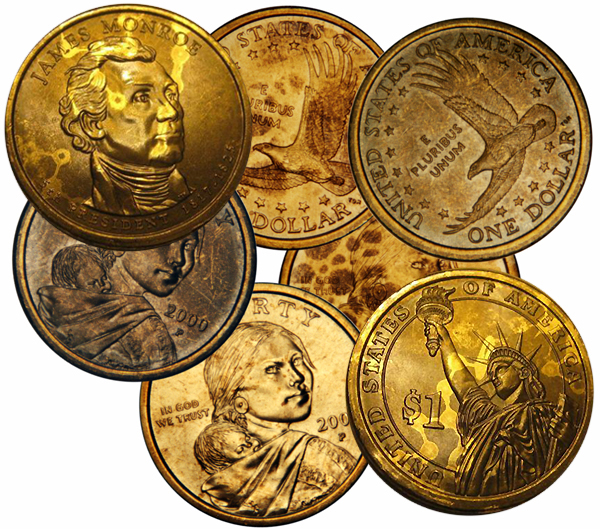
Starting in 2000 when the Sacagawea dollars
were first released to the public, collectors began finding coins with surface
discoloration that ranged from light to dark and spotty to relatively
uniform. Colors ranged from all shades of brown to olive-green to gray or nearly black
with a touch of iridescence thrown in for good measure. Nobody knew what the discoloration represented and after the
hobby made several inquires to the Mint, the prevailing answer seemed to be that
they were the result of incompletely or improperly washed planchets. To
some it seemed a dubious answer but it was all we had. Additionally, it
seemed that fewer were being found on later-date issues. This was probably
because, like its predecessor, the Susan B. Anthony dollar, it flopped with the
public and far fewer were minted after 2000 with those that were produced
restricted to numismatic sales. In time the subject just fizzed out and
was forgotten.
With the release of the Presidential dollars starting in
2007, the Mint again
put on a big push to make them circulate and minted them by the hundreds of
millions. Almost immediately upon their release collectors learned that
the Mint had inadvertently released major errors by the hundreds of thousands on
the George Washington Presidential dollars and then a few months later by the
tens of thousands on the John Adams dollars. These coins were either
missing the mandated edge lettering or contained the edge lettering applied
twice in error. Naturally, collectors began to look at their
"golden dollars" much closer. As they did they found that in
addition to the edge errors, starting with the Washington dollars and throughout
the entire series minted so far, that some of the coins were discolored
and were turning up in quantities worth noting (though nothing near the
quantities of the plain-edge and double-edge lettered dollars).
Interestingly, the hobby still does not seem to agree on what these discolored dollars represent! Some refer
to them as improperly washed, others, such as ANACS refers to them as
"Improperly Mixed Alloy" and still others such as PCGS refer to them
as struck on "Sintered Planchets" while NGC calls them
"Improperly Annealed Planchets."
NGC describes them on their website as follows: "A planchet may also pick up a coating if it is improperly annealed. This is a somewhat common error but one that is very difficult to authenticate.
"Improper annealing is often confused with toning coins. Unfortunately, improperly annealed planchets can take on a variety of colors from black to copper red. They are caused by over heating the
planchets." None of the other major grading services offer a
description of the error that I could find.
In a September 22, 2008 Coin World article, Paul Gilkes
quotes senior metallurgist, Chris Pilliod for Carpenter Technology of Pa. as
saying, "without analyzing a piece it is all speculation on the Mint's part
and on my own." Pilliod then went on to suggest that the discoloration could be the result of
oxidation of the manganese in the coin's alloy, (manganese oxidizes more
readily than the copper, nickel and zinc that makes up the remainder of the
alloy). Pilliod also suggested that the discoloration could be the result of improper
annealing saying that breaking the vacuum seal to allow more oxygen into the
furnace could increase the temperature above the desired level. Gilkes
also reported that one of Pilliod's colleagues, J.D. Bonn, Sr. suggested that the
discoloration could be the result of improper alloy mix or if spotty could be
the result of an incomplete rinse. Clearly, without actual testing, these sources, could offer
little more than what had already been speculated upon by others.
So the question remains, what is the cause? My guess is
that there is a variety of causes for the different effects but the question
still remains, what causes result in what effects? Does anybody have any ideas? I'd like to hear from you! Contact me at:
kpotter256@aol.com
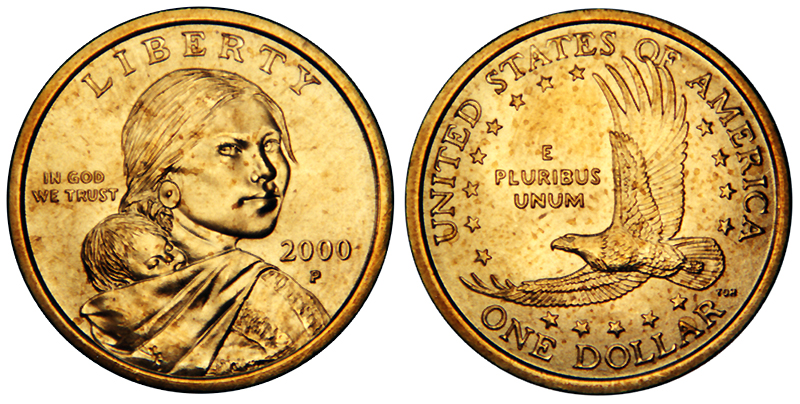
These Sac dollars shown here were found by John Salvali in a group of
Sacagawea dollars
he obtained from Wal-Mart on the day after their release.
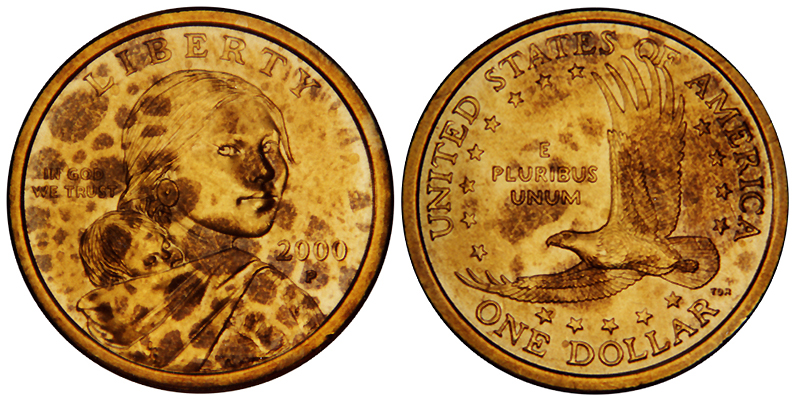
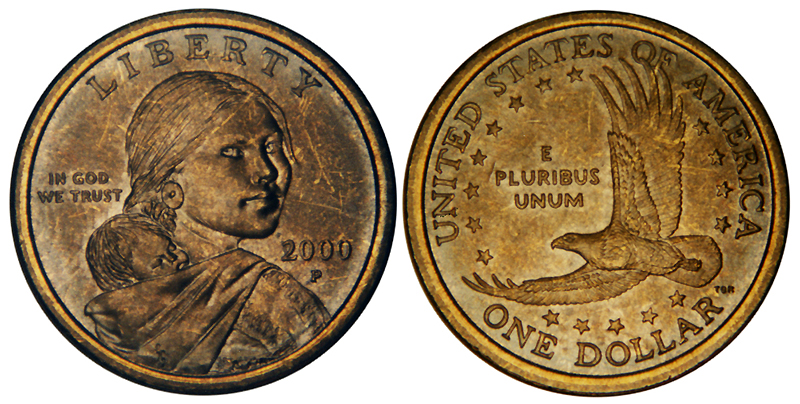
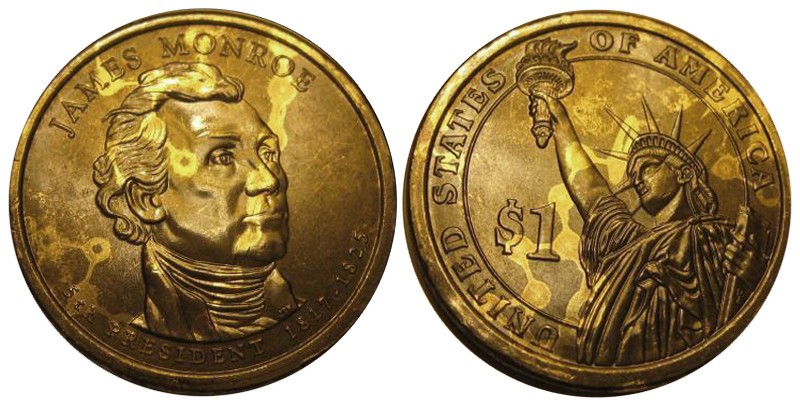
Ken Potter
P.O. Box 760232
Lathrup Village, MI 48076-0232
Phone: 1-(313)255-8907 E-mail: KPotter256@aol.com
Numismatist Since 1959 ~ Serving
The Collector Since 1973
CONECA's Longest Serving Doubled Die Attributer
Member of: ANA, CONECA-LM,
NLG, NCADD-FM, IASAC, MSNS-LM
NWDCC, RCC, WBCC, BBCC
Ken Potter's Variety Vault
Educational Image
Gallery
Who Is Ken Potter?